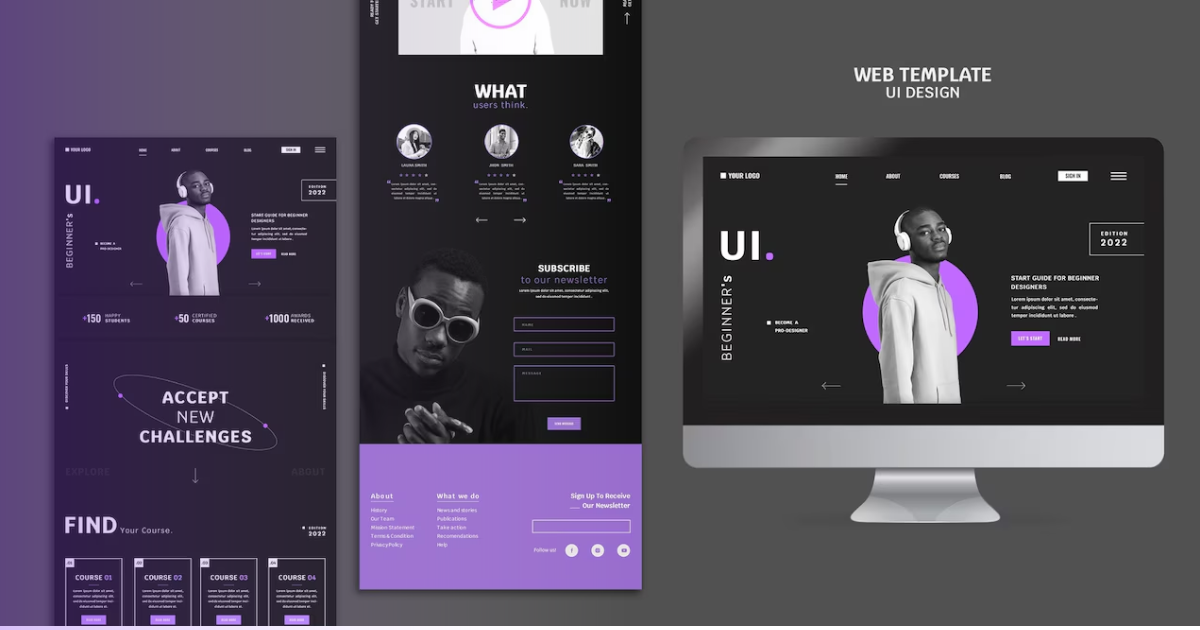Aligned Position Web Design: Tailor-Made Web Design Solutions for Maximum User Engagement
The Best Sorts Of Website Design to Boost Individual Experience and Involvement
In the ever-evolving landscape of electronic communication, the efficiency of Web style dramatically influences customer experience and engagement. Various design methods, such as minimalist, responsive, and interactive designs, each offer distinct advantages that can cater to diverse user needs.
Minimal Web Layout
As electronic landscapes come to be significantly messy, minimal Web design has become an effective strategy to boosting customer experience. This style approach prioritizes simplicity, concentrating on essential elements while eliminating unneeded disturbances. By making use of enough white room, simple navigation, and a limited color palette, minimal layout promotes clearness and directs customer focus to crucial material.
The core principle of minimal website design is to develop a smooth interaction for customers. By minimizing cognitive tons, users can promptly understand information without really feeling overwhelmed. This direct strategy not only improves functionality but additionally motivates engagement, as site visitors are most likely to check out a site that is aesthetically attractive and easy to navigate.
In addition, minimalist layout commonly emphasizes typography and imagery, using these elements purposefully to communicate messages effectively. This emphasis on essential elements can improve brand name identity and develop an unforgettable customer experience. In essence, minimal website design is not simply a trend; it is a thoughtful method that recognizes the value of user-centered layout. By stripping away nonessential components, developers can create a much more interesting, efficient, and satisfying Web experience for all users.
Responsive Website Design
In today's diverse digital atmosphere, receptive Web layout has become necessary for creating a smooth customer experience throughout a multitude of devices. As individuals gain access to internet sites on mobile phones, desktop computers, laptop computers, and tablet computers, the capacity of an internet site to adjust its format and content to different display dimensions and resolutions is critical.
Receptive Web design employs adaptable grids, photos, and CSS media inquiries to make sure that Web content exists optimally, no matter of the tool utilized. This technique not only enhances the aesthetic allure of a website yet additionally substantially enhances usability. Customers are most likely to engage with a website that provides a consistent experience, as it removes the stress of needing to focus or scroll exceedingly.
By embracing receptive design, businesses can enhance their presence and reach a more comprehensive audience. In summary, responsive Web style is a fundamental method that enhances user experience, engagement, and general contentment.
Interactive Website Design
Receptive Web style lays the groundwork for enhancing customer experience, yet interactive website design takes this an action further by engaging individuals in an extra dynamic means - Aligned Position Web Design. By incorporating aspects such as computer animations, clickable models, and real-time responses, interactive website design captivates users, drawing them into a richer browsing experience
This strategy not just fosters engagement but also encourages customers to discover content proactively instead than passively eating it. Methods such as gamification, where individuals earn incentives for finishing tasks, can considerably boost the moment invested on a site and enhance overall fulfillment. In addition, interactive attributes can simplify intricate info, making it a lot more digestible and enjoyable.

Including interactive style elements can likewise bring about higher conversion prices, as individuals are extra likely to involve with a website that actively includes them. Aligned Position Web Design. Inevitably, interactive Web style changes user experiences into remarkable trips, guaranteeing that site visitors return time and again
Flat Layout
Identified by its minimalistic approach, flat design highlights simplicity and performance, removing unneeded components and concentrating on essential features. This design viewpoint prioritizes usability, guaranteeing that individuals can navigate interfaces effortlessly and effectiveness. By utilizing a clean aesthetic, flat design eliminates the mess often found in more ornate designs, therefore boosting customer concentrate on material and performance.
The trademark of flat design hinges on its use vibrant colors, easy typography, and geometric shapes. These elements add to an aesthetically attractive interface that is both friendly and contemporary. Additionally, level style promotes a sense of quality, enabling individuals to discern essential activities and info without interruption.
Moreover, flat style is specifically reliable in responsive Web layout, as its simpleness converts well throughout numerous tools and display dimensions. By focusing on important functions, flat design not just meets individual needs however additionally motivates smooth communication, making it other an important component of reliable Web layout methods.
Flexible Web Design
Adaptive Web style tailors the user experience by developing multiple fixed formats tailored to different screen dimensions and gadgets. Unlike receptive design, which fluidly changes a solitary format, flexible layout uses distinctive layouts for specific breakpoints, guaranteeing ideal discussion on different systems. This technique enables developers to concentrate on the special attributes of each tool, boosting use by providing exactly what individuals need based on their context.
One of the primary benefits of flexible website design is its capability see to enhance load times and performance. By offering customized material and pictures that fit the user's device, websites can decrease information use and enhance loading speeds. This is specifically beneficial for customers with slower links or restricted data plans.

Additionally, flexible layout assists in an extra controlled and constant branding experience. Since developers develop multiple designs, they can make certain that the visual aspects straighten with the brand's identity throughout various platforms - Aligned Position Web Design. This leads to a natural customer experience, enhancing interaction and advertising customer retention
Conclusion
In final thought, the assimilation of minimal, responsive, and interactive website design concepts significantly enhances individual experience and involvement. Minimal design fosters clearness and focus, while receptive design guarantees versatility throughout numerous tools, promoting availability. Interactive layout mesmerizes individuals via vibrant elements, encouraging expedition and customization. Jointly, these style comes close to add to the development of easy to use environments that not only enhance contentment yet additionally drive greater conversion prices, highlighting their important relevance in my link modern website design techniques.

Minimalist design promotes clearness and emphasis, while receptive layout ensures versatility throughout numerous tools, advertising access. Collectively, these design approaches contribute to the creation of easy to use atmospheres that not just boost satisfaction but also drive higher conversion rates, underscoring their crucial significance in contemporary Web design strategies.